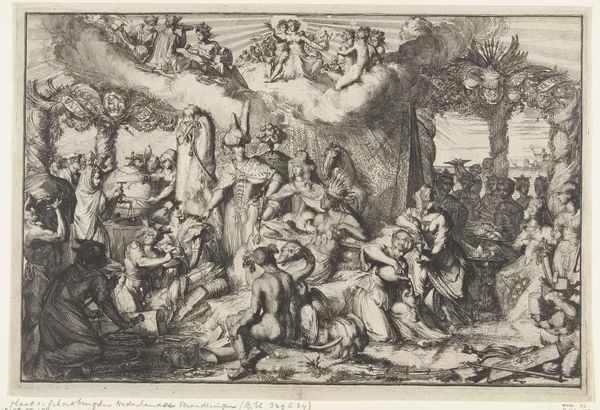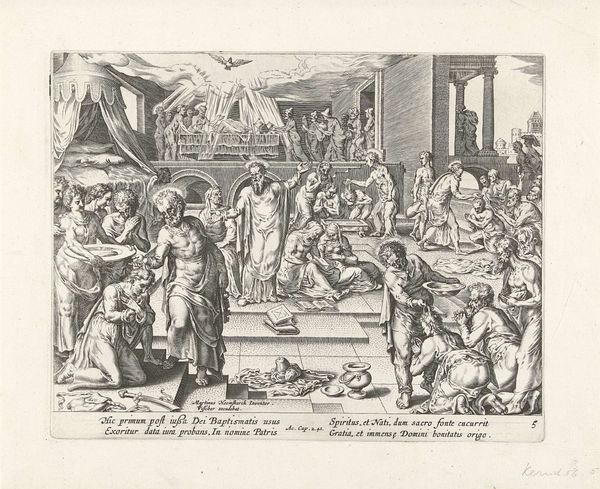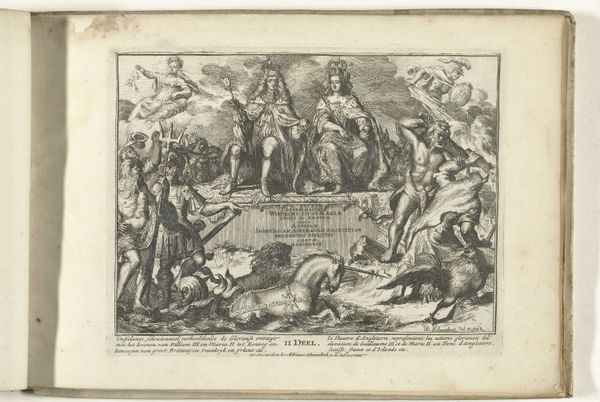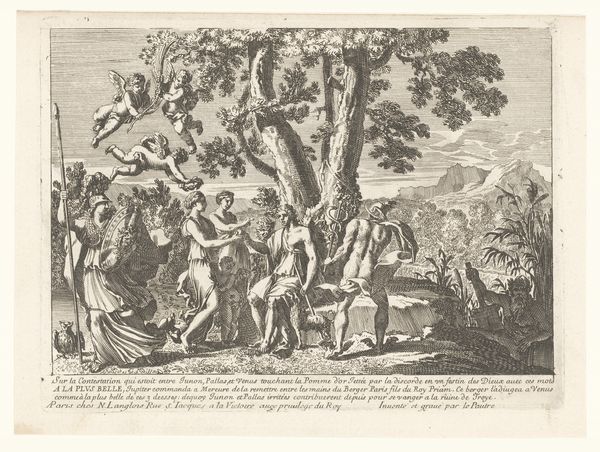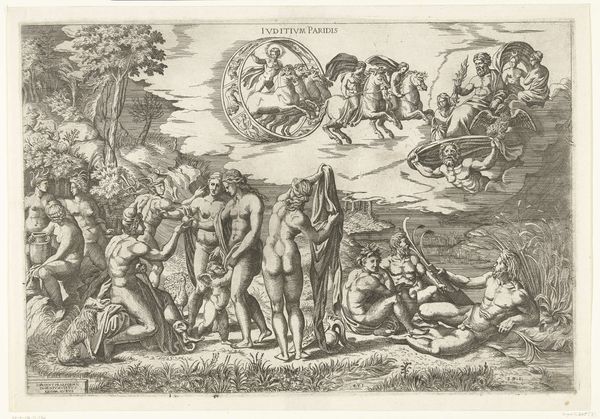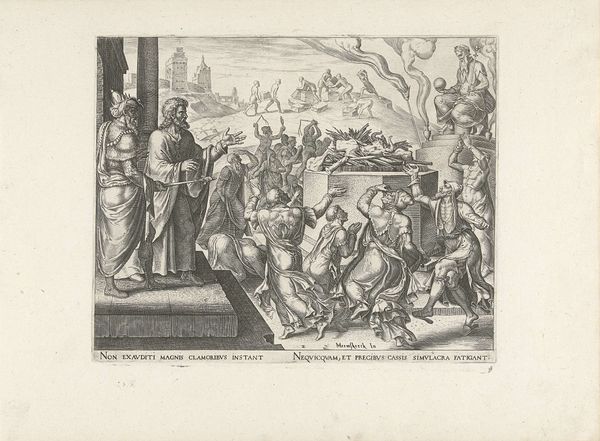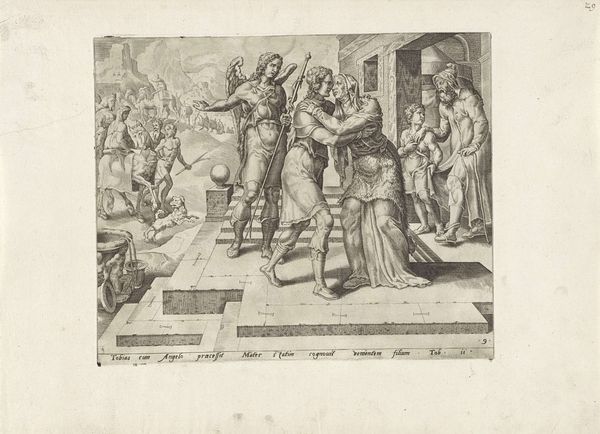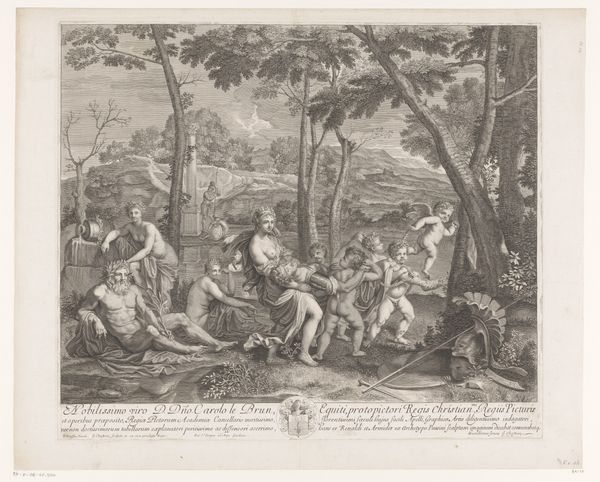
print, etching, engraving
#
narrative-art
#
baroque
#
dutch-golden-age
# print
#
etching
#
figuration
#
group-portraits
#
history-painting
#
engraving
Dimensions: height 122 mm, width 133 mm
Copyright: Rijks Museum: Open Domain
Curator: Gaspard Bouttats created this print, "The Mutilated Bodies of the De Witt Brothers, 1672", an engraving, etching, dating back to 1672, depicting a grim event in Dutch history, permanently on view at the Rijksmuseum. Editor: Ugh, it hits you like a punch, doesn't it? This frenzied mob…It is such a brutal snapshot in time. Raw emotion bleeding from every scratched line, like a collective madness rendered on paper. Curator: Indeed. This print captures a pivotal moment in the Dutch Republic's history, one marked by political turmoil. The De Witt brothers, who held significant political power, were lynched by an Orangist mob, who opposed them. Editor: The way everyone seems to be pulling in a different direction too - there's barely any room to breathe. You can almost feel the screams bouncing around the image and the details like the dogs barking, is absolutely blood chilling Curator: What's compelling is that this imagery taps into existing public sentiments. Prints like these served as propaganda, solidifying a certain narrative. Bouttats made choices that would influence public perceptions and memorialization. Editor: Propaganda's a funny thing isn't it? The whole composition shouts ‘mob rule’ and loss of control. And I notice he’s included elements which make me stop and think about what actually happened here in a sort of grotesque fascination, almost like theatre! Curator: These kinds of images contributed to the ongoing narrative surrounding the brothers and, as time passed, played a key role in forming broader understandings of their fate. Prints offered a tangible means for distributing these beliefs and perspectives to broader audiences. Editor: Makes you wonder how much the artist, Bouttats, was affected by the reality of that moment? It is difficult not to question our roles as onlookers as we witness this moment through someone else's eyes in print. Curator: Right. And, I think it's vital that we consider what images endure and the sociopolitical choices we must wrestle with. It requires reflection and, most certainly, respect. Editor: Absolutely, it feels heavy thinking of these dark currents throughout time, captured forever. A real history lesson.
Comments
No comments
Be the first to comment and join the conversation on the ultimate creative platform.
